A wellness retreat is a structured getaway that combines hiking, yoga, and adventure in a natural setting, designed to help you disconnect from daily stress and reconnect with yourself. Think of it as a reset button: you leave your regular responsibilities behind, spend several days moving your body in the mountains, and come home feeling clearer and more energized.
Revelstoke Retreats offers women’s wellness retreats throughout BC that blend guided alpine hiking with daily yoga and journaling practice. Groups of around 15 women hike 8 to 14 kilometers per day with certified hiking guides, practice morning meditation or yoga, and spend evenings in comfortable mountain lodges or backcountry huts. No previous yoga experience is required, but you do need solid fitness for mountain trails.
Why More Women Are Choosing Wellness Retreats
Let’s be honest: life gets full. Work, family, responsibilities, that mental checklist that never ends. Most of us are excellent at taking care of everyone else and pretty terrible at carving out time for ourselves.
Women’s wellness retreats solve a specific problem: they give you permission (and sometimes even a helicopter ticket) to actually leave. You go somewhere beautiful, do things that make your body feel strong, and come back with your head on straight.
The retreats work as a reset when daily stresses have piled up so gradually you didn’t notice you’ve stopped doing the things that make you feel good. Sometimes you need to physically remove yourself from your regular life to remember what that feels like.
What to Expect on a Yoga and Hiking Retreat
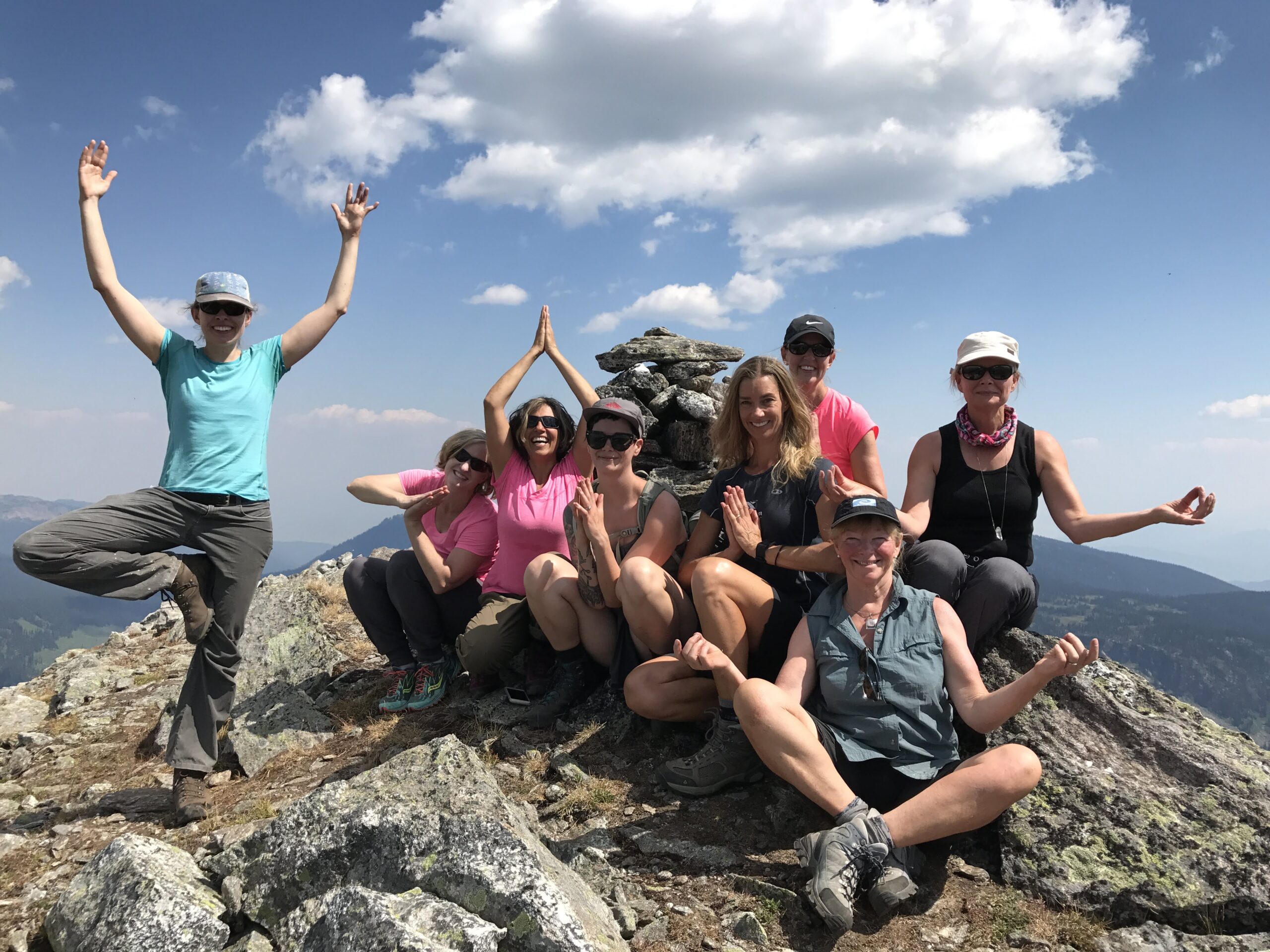
Every Revelstoke Retreat experience weaves together elements designed to wake up both your body and mind. While each retreat has its own character, here’s the general rhythm you can expect:
The Grand Traverse: Four Nights Hut-to-Hut
This backcountry adventure takes you across the Esplanade Range through three different huts before finishing at Sentry Lodge. Your main gear helicopters ahead, so you hike with just a day pack.
Accommodations: Shared rooms with two people per room, everyone with their own bed. Cozy huts with relaxing lounge areas. Sentry Lodge (built in 2012) offers running water, indoor toilets, and a sauna – backcountry luxury after days on the trail.
Daily Rhythm: Morning meditation at 7 a.m., breakfast at 8 a.m., on the trail by 9:30 a.m. You’ll hike 8 to 14 kilometers through alpine terrain, returning around 4 p.m. for appetizers and a possible yoga stretch before dinner at 7 p.m. At Sentry Lodge, there’s space for full yoga practices with mats.
Activities: ACMG-certified guides Beth and Kristin lead you through spectacular mountain terrain. Alpine lake swims when you pass them (cold but worth it).To accommodate different pages, Beth and Kristin hike in two separate groups. Each group moves together at a sustainable pace – nobody gets left behind.
Food: Fresh ingredients, catered dishes from excellent backcountry chefs, all dietary needs accommodated. Guests consistently rave about the meals. You don’t plan, shop, cook, or clean.
Sentinel Retreat: Lakeside Restoration
This weekend retreat on Kootenay Lake is designed for rest and reflection rather than rigorous hiking.
Accommodations: Private deluxe rooms overlooking Kootenay Lake at the Sentinel Retreat Center in Kaslo, BC. Sauna and hot tub with lake views.
Daily Rhythm: Twice-daily yoga classes exploring Vinyasa Flow, Yin, Restorative, and Yoga Nidra. Morning and evening practices bookend your day.
Activities: Field journaling and sketching workshops, optional massage, gentle exploration of the lakeside area. This retreat emphasizes being over doing.
Food: Gourmet catering with fresh ingredients from lakeside kitchen and gardens. All meals provided, special dietary requirements handled.
Revelstoke Local Retreat: Adventure in Our Backyard
This four-night retreat based in Revelstoke gives you mountain adventure with comfortable lodge amenities. The highlight? One full day of heli-assisted hiking where a helicopter drops you deep into the mountains for spectacular trails you couldn’t otherwise access. The rest of the days feature guided hiking in the Selkirk and Monashee ranges, yoga sessions, and evenings in a cozy lodge with hot tub and plenty of space to spread out.
Baja Mexico: Winter Escape

When Canadian winter stretches long, the oceanfront retreat at Prana del Mar in Baja offers seven nights of warmth and wellness. Twice-daily yoga (morning active flow, afternoon slow stretch), sketching and journaling workshops, deluxe private rooms with terraces, and organic garden-to-table meals. You can join optional adventures, walk miles of quiet beach, or simply read by the saltwater pool. It’s luxury wellness with Pacific Ocean views.
Custom Retreats: Co-Create Your Perfect Girl’s Getaway
Have a specific vision? Revelstoke Retreats also designs custom experiences throughout BC. Whether you want to gather your own group, explore a particular region, or blend hiking and yoga in a way that fits your needs, owners and guides Beth and Kristin can help co-create the perfect mountain getaway. Get in touch to start planning.
Who Goes on These Retreats?
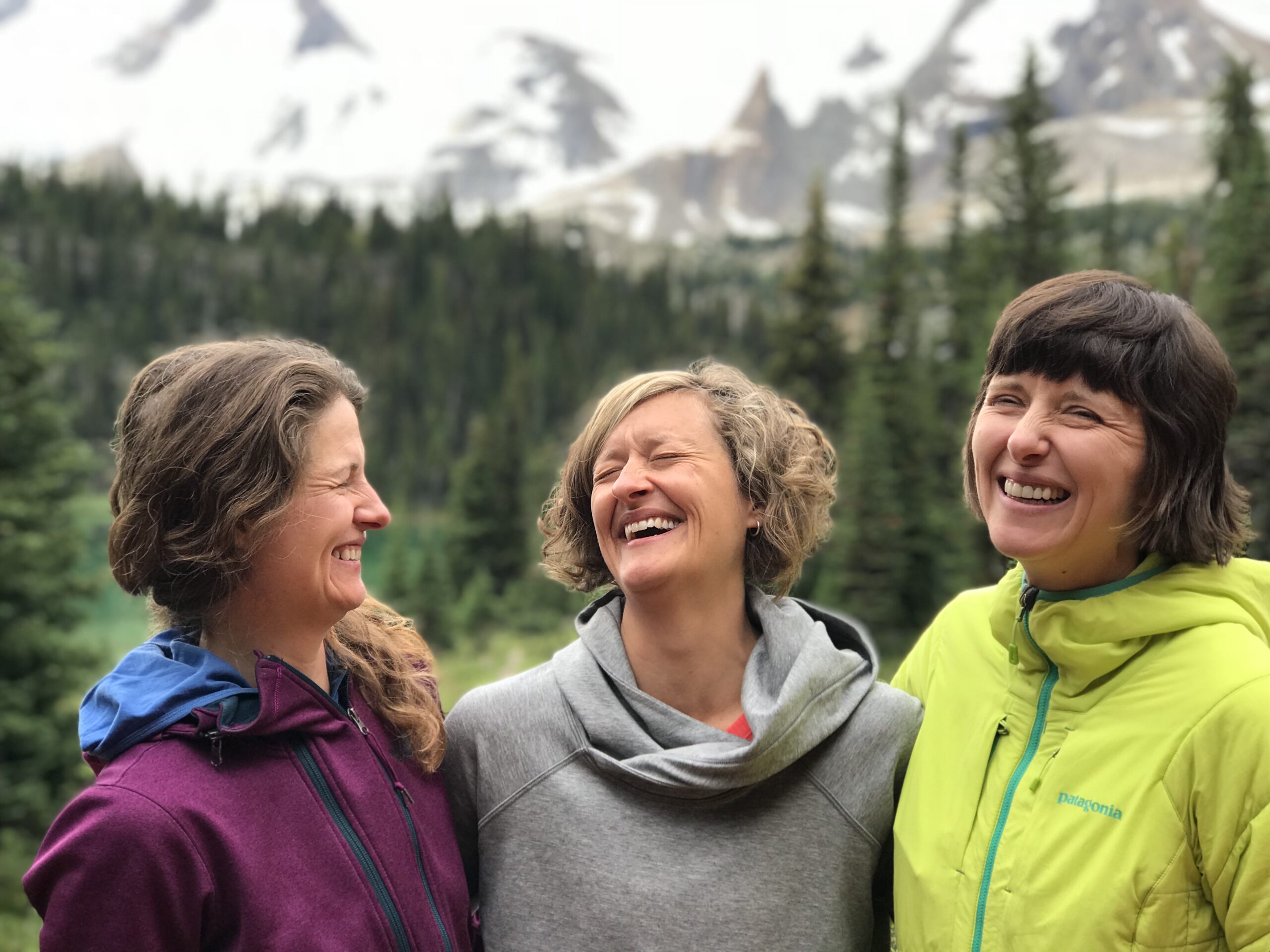
These retreats draw women from all walks of life. Most guests are women ages 40-65, though mother-daughter trips bring wonderful age ranges (25 to 65+). About 85% come with a friend or family member. The other 15% come solo and leave with new hiking buddies. Almost all of them become repeat adventurers.
Hilda, now a repeat guest, captures what makes these retreats special:
“What an amazing, wonderful, memorable experience with Revelstoke Retreat. So well organized, full of enthusiasm, positive comments, encouragement and fun!! These gals make it an adventure to remember. The hiking is jaw dropping, vistas that no words can describe, and the food!!! WOW! The Yoga is the icing on the cake, gets the day going and relaxes post hike. My second adventure with Beth and Kristin, can’t wait for the next one!”
Casey found the perfect balance:
“Beth and Kristin were THE PERFECT guides on our group’s grand traverse excursion. They were knowledgeable, prepared, and always put our safety first. The conversation flowed easily and there were many, many laughs. Starting and ending each day with yoga or meditation was the perfect way to bookend each hike, and the food was amazing.”
And Colleen discovered something deeper:
“My recent experience on the heli-hiking/yoga/meditation retreat was awesome! Beth and Kirsten as guides ensured we were safe at all times and set a good pace with each hike. I really appreciated the meditation to remind us to be present while hiking in order to fully appreciate the spectacular views. The yoga was also wonderful as my muscles welcomed the stretching after hiking all day.”
What to Pack for Your Wellness Retreat
Packing for a mountain wellness retreat requires some thought, especially if you’re heading to remote backcountry locations where you’ll carry your gear.
For a detailed packing guide, check out this helpful video:
What to Pack for a Wellness Retreat
The essentials:
- Hiking boots that you’ve already broken in
- Layers for unpredictable mountain weather (that summit can be chilly even in August)
- Comfortable, breathable clothes that move with you
- A water bottle
- Journal and pen for capturing thoughts and moments
- Good sunscreen and a hat
Revelstoke Retreats provides yoga mats and props, but double-check with Beth and Kristin to find out what’s included with your specific retreat.
Meet Your Guides: Beth and Kristin
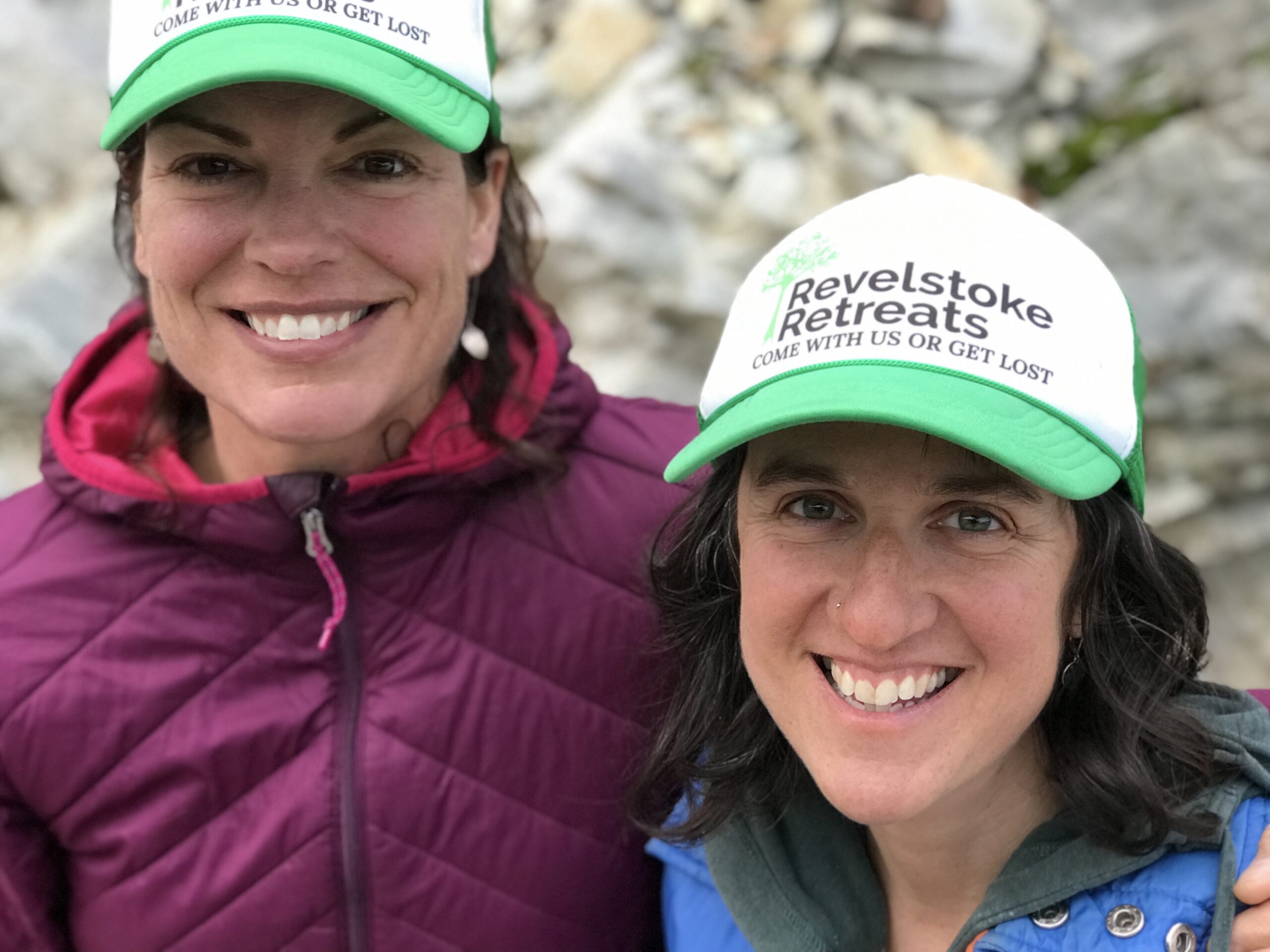
Beth Purser and Kristin Anthony-Malone are both ACMG-certified hiking guides with decades of mountain experience between them. Beth’s also an RYT-500 yoga teacher and massage therapist who’s been in Revelstoke for nearly 20 years. Kristin was previously the Operations Manager for the Canadian Avalanche Association, and is currently consults as a Project Manager for Avalanche Research. She brings over 20 years of guiding experience across the United States and Canada.
What they love about these retreats: “Time for great conversation, connection, seeing people push their limits but also take time to relax,” Kristin shares. “Disconnection from wifi and cell service. Seeing the life-enhancing and often life-changing effect it has on our guests. Exploring the backcountry, the excitement of others, makes me see it for the first time again and again.”
Kristin used to guide full-time, but this partnership with Beth hits a sweet spot. “Yes, it’s still work,” she says, “but there is so much joy and laughter and fun. I love the feeling we get at the end of every retreat where we just can’t wait for the next one.”
When your guides genuinely love what they do, you feel it. It shows in how they lead, how they encourage, and how they create space for both challenge and rest.
Booking your BC Wellness Retreat
Ready to explore hiking and yoga retreats in BC and beyond? Whether you’re drawn to the alpine challenge of the Grand Traverse, the restorative peace of lakeside Sentinel, or winter escapes to Mexico, there’s a retreat calling your name. The mountains are ready when you are.

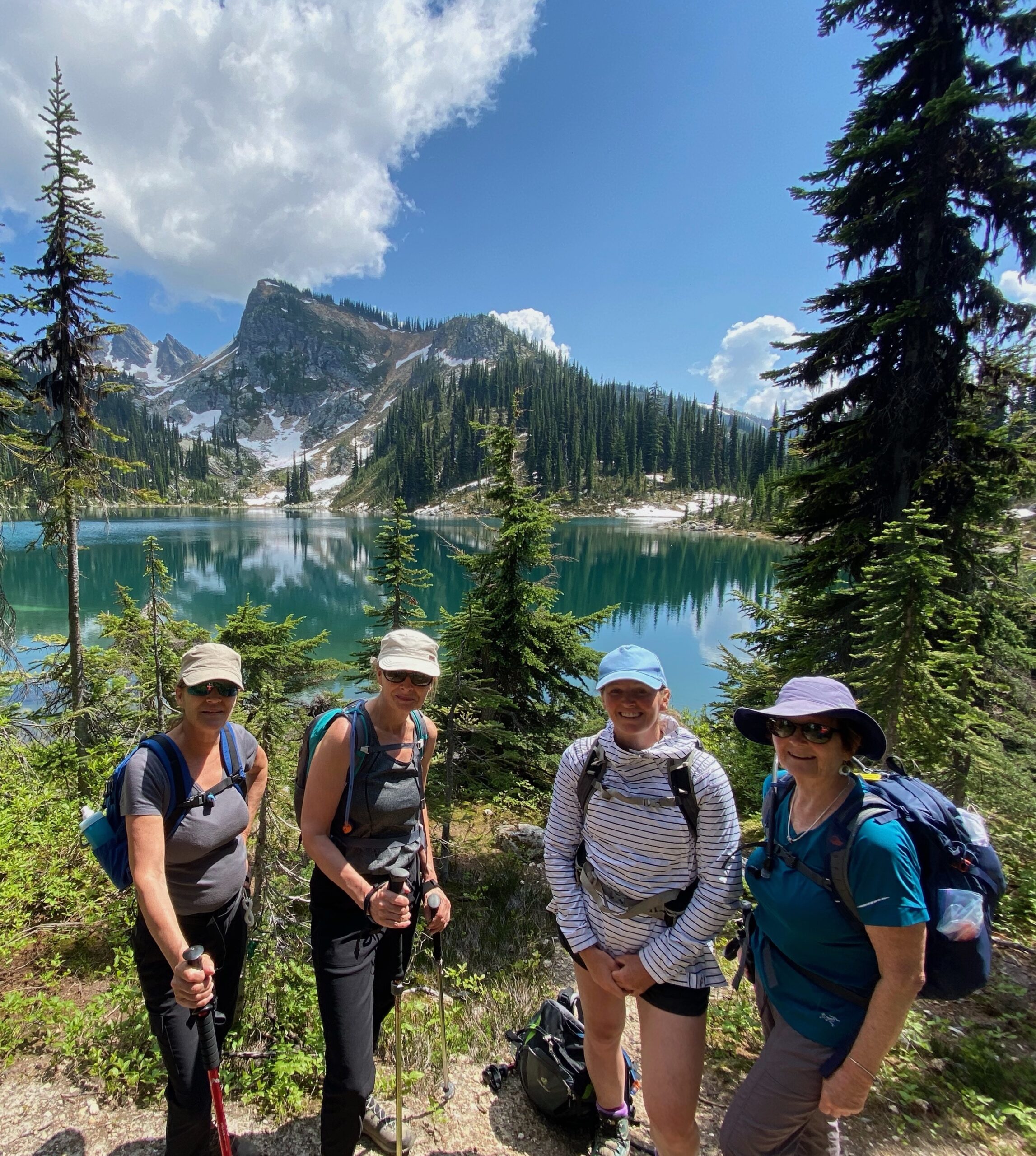
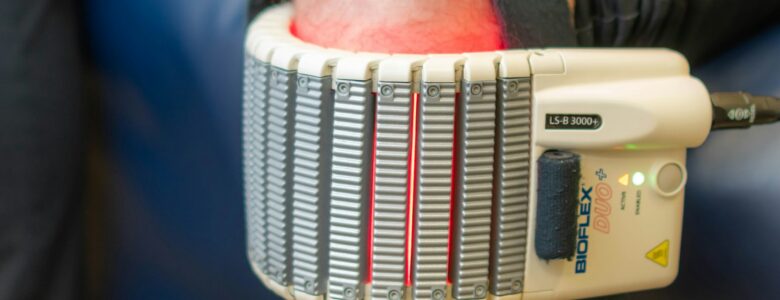
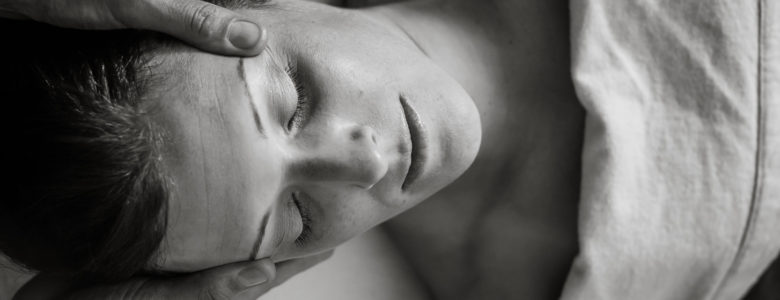
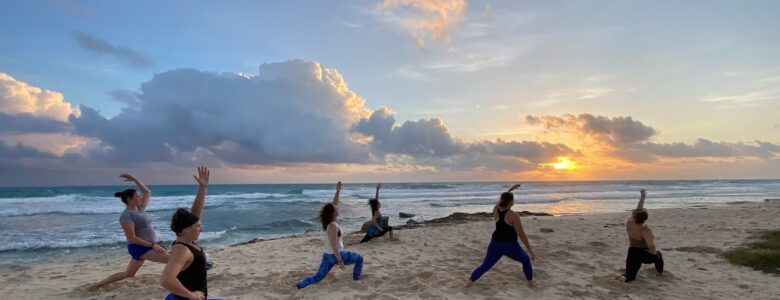
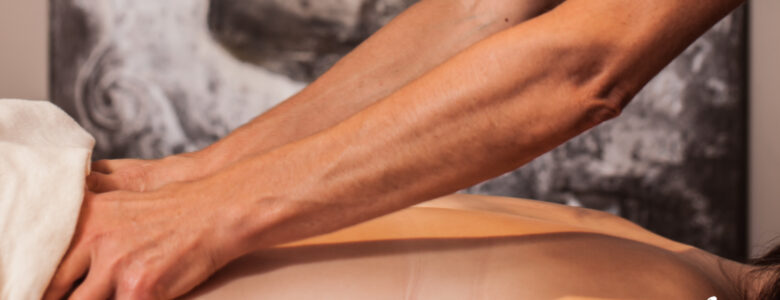
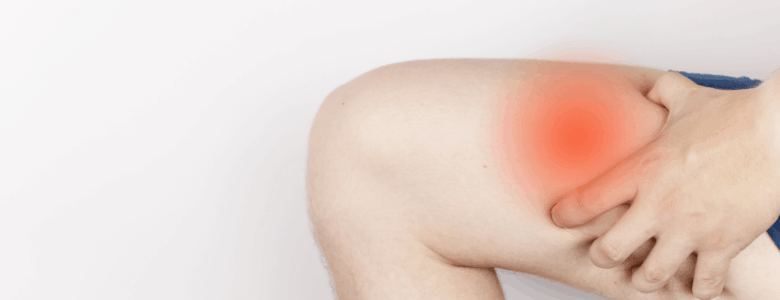
Recent Comments